
The biomedicine industry is a strategic emerging industry related to the national economy and people's livelihood and national security. At present, the biopharmaceutical industry is ushering in a new round of scientific and technological revolution and industrial change, and the global biopharmaceutical market continues to grow. The development of the biomedical industry is of great significance for improving the national health level, enhancing the comprehensive strength of the country and coping with public health emergencies.
On June 16, the establishment ceremony of the biomedical future Industry (Changtriangle) innovation consortium was held in Nantong, Jiangsu province. By the advanced medical materials and medical devices, pilot drug research and other 7 state key laboratories, national key laboratories, Shanghai, Jiangsu, Zhejiang and Anhui three provinces and one city biomedicine, medical device leading enterprises, key parks and related universities, research institutes, innovation subjects jointly initiated and participated in the establishment of China's first biomedical future industry innovation consortium in the Yangtze River Delta region. To promote China's biomedicine industry to create an important position for the development of new quality productivity.
It is understood that the Yangtze River Delta region is one of the regions with the most active economic development, the highest degree of openness and the strongest innovation capacity in China, and it is also a highland of the biomedical industry. The Yangtze River Delta region's comprehensive strength in the field of biomedicine accounts for about one-third of the country, with rich talents, high scientific and technological level, developed manufacturing industry, complete industrial chain and supply chain, and large market potential, and has the hardware and software advantages of establishing the future industrial innovation consortium of biomedicine.
According to reports, the biomedical Future Industry (Yangtze River Delta) innovation consortium will focus on small nucleic acid and other new drug research and development, exosome and cell therapy, advanced medical materials and medical devices, high-end medical equipment and medical advanced manufacturing, artificial intelligence, brain-computer interface and medical intelligent manufacturing, organ chip, organoid construction and regenerative medicine. Big data, smart medical treatment, cancer and chronic disease prevention and control Huimin Project, biosynthesis and biological manufacturing and other seven future industry "new track", using the conditions that the joint units have, to build a number of industrial incubation platforms and common technology platforms, to form an approved listing registration-oriented investment and financing development model. To help the future high-quality development of the biomedical industry in the Yangtze River Delta region.
Looking back at the development of China's biomedical industry:
-- Scale of development of the national biomedical industry
Compared with foreign biomedicine industry, China started late but developed rapidly, the domestic biomedicine industry began to develop from the 1980s, experienced a rapid development stage from 2005 to 2017, and began to enter the explosive growth stage from 2017. During the 11th Five-Year Plan period, China has gradually formed three integrated biological industry bases in the Yangtze River Delta, the Pearl River Delta and the Beijing-Tianjin-Hebei region. Since 2017, China has officially joined the International Coordinating Committee for the Technical Registration of Pharmaceutical Products for Human Use. During the "14th Five-Year Plan" period, China is committed to focusing on biomedicine and other fields to accelerate the construction of strategic scientific and technological forces led by national laboratories.
According to the data of the National Bureau of Statistics, in 2019, the scale of biomedicine in China reached 3.29 trillion yuan, and in 2020, the scale of biomedicine in China reached 3.57 trillion yuan, an increase of 8.51%. In 2021, the growth rate was boosted again, and the scale of China's biomedical market reached 397 million yuan; With the continuous increase of scientific research investment in the field of biomedicine in China, the continuous optimization and adjustment of industrial structure, and the influence of factors such as the normalization of domestic epidemic and repeated demand, it is predicted that by 2023, the scale of biomedicine in China will reach 4.3 trillion yuan.
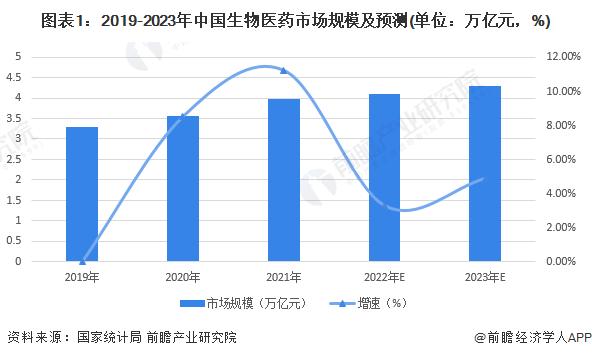
-- Regional heat map of biomedical industry chain
From the perspective of the regional distribution of representative enterprises in the industrial chain, Shanghai, Guangdong and Beijing have the advantages of industrial chain cluster. Among them, the representative enterprises in the biomedical industry in Shanghai run through the upper, middle and lower reaches of the biomedical industry, and have a good cluster advantage. There are middle-stream pharmaceutical enterprises and downstream pharmaceutical distribution enterprises in Guangdong Province. There are upstream raw material enterprises and midstream pharmaceutical enterprises in Beijing. In addition, there are upstream pharmaceutical equipment representative enterprises in Shandong Province, upstream API representative enterprises in Hunan Province, downstream pharmaceutical circulation enterprises in Hubei Province, and traditional Chinese medicine manufacturing enterprises are also distributed in Guizhou and Fujian provinces, where plant species are rich.
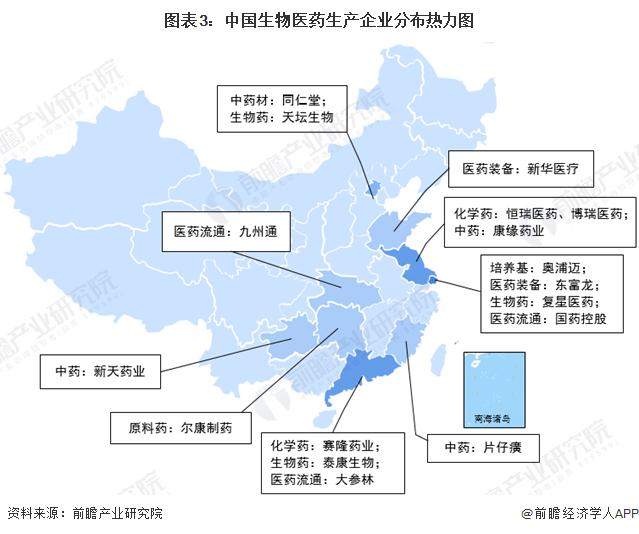
-- Biological medicine industrial park distribution
According to the Prospective Industrial park database, as of May 20, 2024, there are 176 biomedical industrial parks in China, mainly distributed in Jiangsu Province, followed by Shandong and Guangdong.
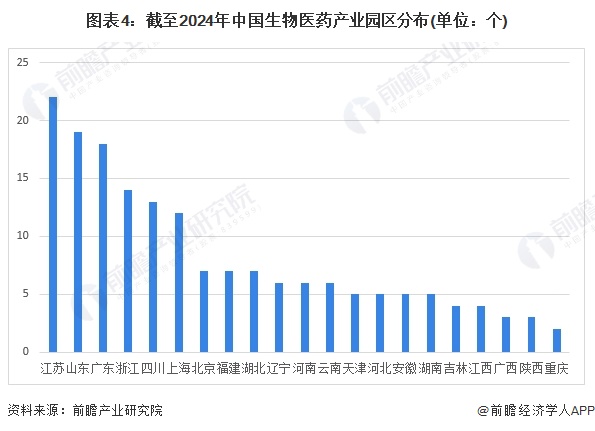
-- Summary of biomedical industry policies in the Yangtze River Delta
As a leading region in China's economic development, the Yangtze River Delta has always been endowed with exemplary significance. As one of the key innovation and development industries in China, with the policy support of the central government, provincial institutions have also introduced a large number of supportive policies to promote the development and upgrading of the biomedical industry in the Yangtze River Delta region.
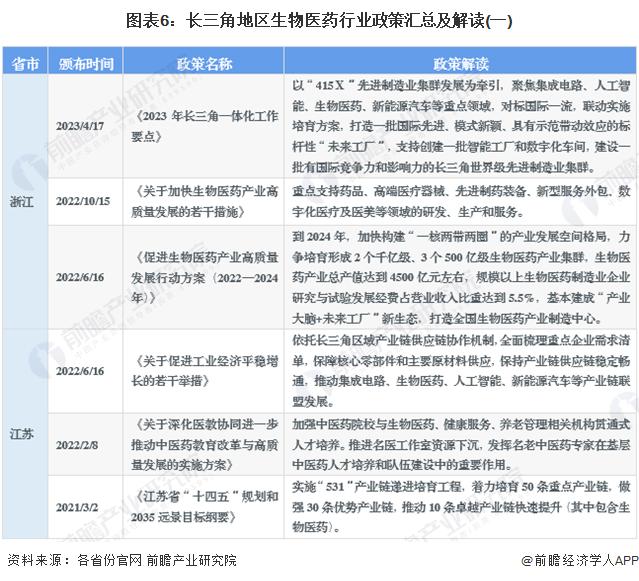
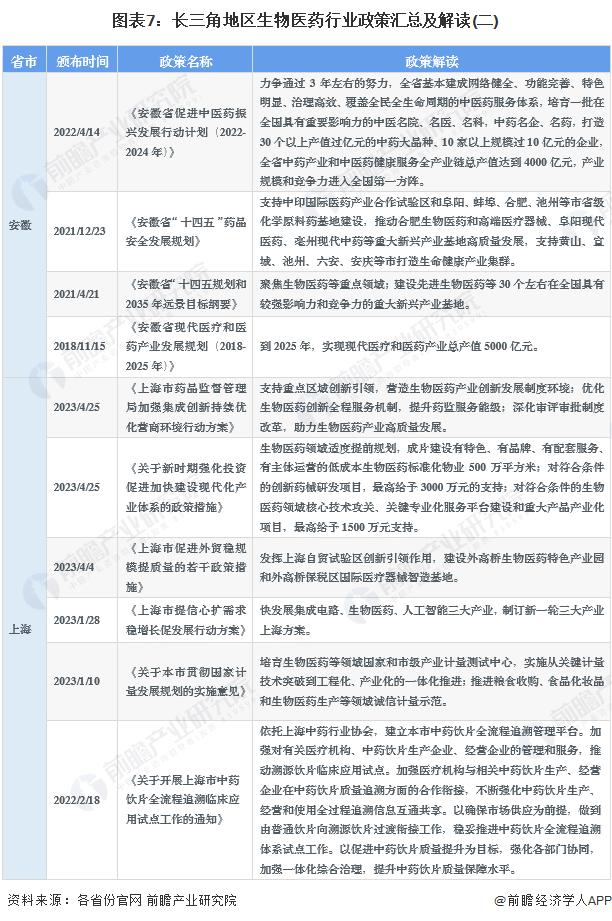
-- Comprehensive ranking of regional thermal value evaluation index of strategic emerging industries in biomedicine industry
In the face of the complex and diversified economic market environment in 2024, the Prospective Industry Research Institute gives full play to its own advantages and releases the Regional Thermal Value Evaluation Index Report of Strategic Emerging Industries based on the big data thermal index of prospective strategic emerging Industries. Through the comparison of indexes, it aims to reflect the development heat and development potential of strategic emerging industries in various regions.
From the comprehensive ranking of regional thermal value evaluation index of strategic emerging industries in the biomedical industry, five districts and counties in Jiangsu Province entered the top 100, namely Huqiu District (41st), Danyang City (46th), Wuzhong District (50th), Pukou District (71st) and Qixia District (99th).
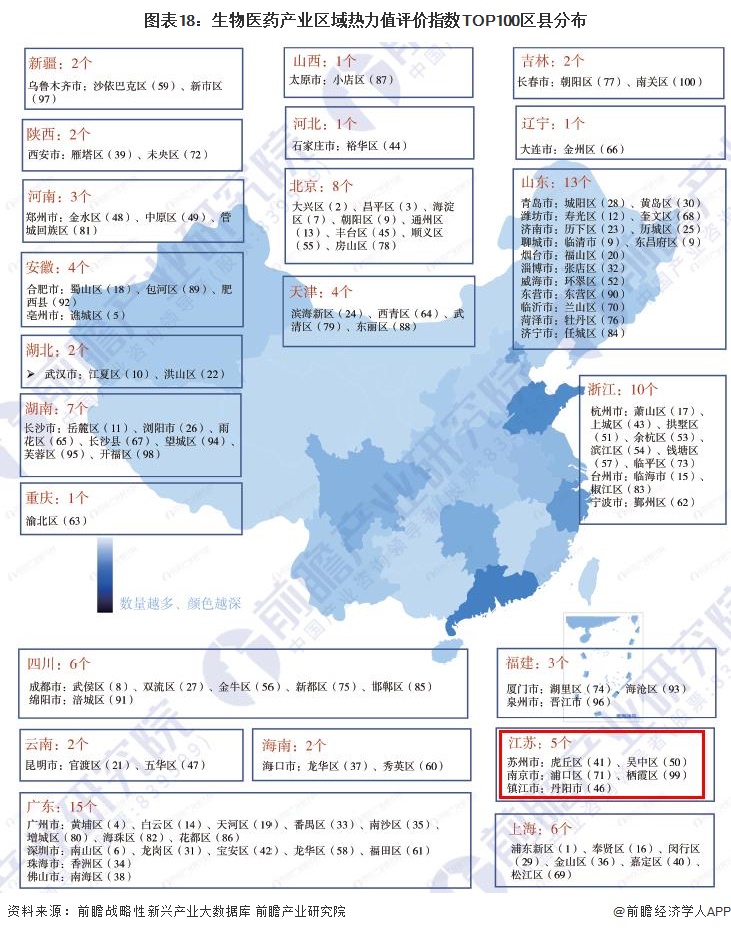
Gu Xiaosong, academician of the Chinese Academy of Engineering and the main initiator of the Biomedical Future Industry (Yangtze River Delta) innovation Consortium, said that the "innovation consortium" will play a leading role in innovation of national strategic scientific and technological forces such as national laboratories, national key laboratories, research institutes and universities. Help the Yangtze River Delta region gradually build a world-class biomedical industry research and development center, a world-class biomedical innovation talent gathering and academic exchange highland, and an important policy source base for the development and leadership of the world's biomedical industry, and further promote the integrated development of the Yangtze River Delta.
|
Last:Reprint: Market segment analysis of China ophthalmic high-value consumables industry in 2024
Next:Appearance and function examination of surgical instruments |
Return |